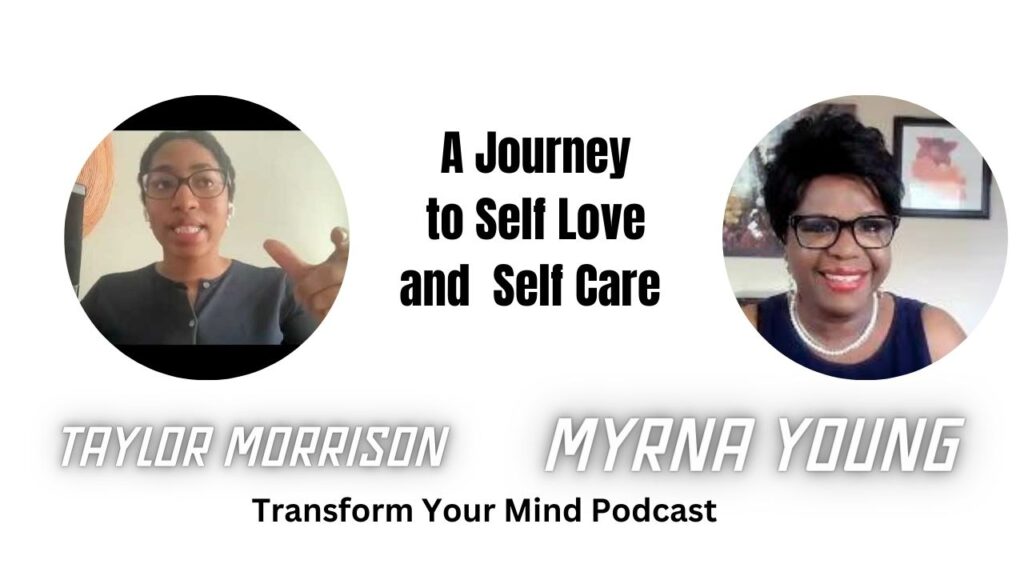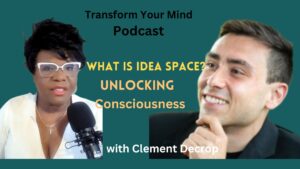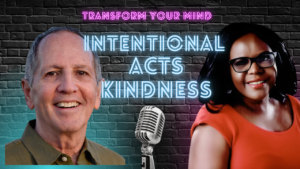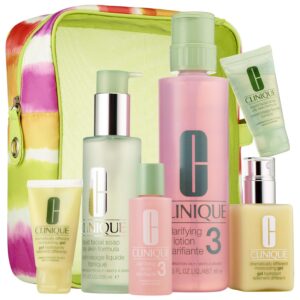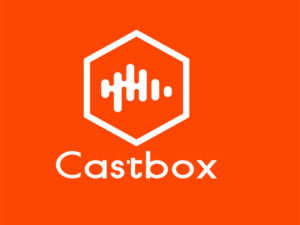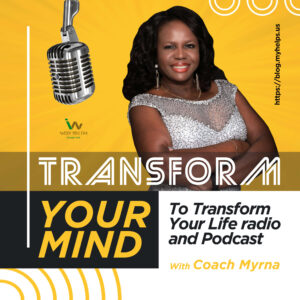In this podcast episode, we’re diving into the topic of self care. This is a topic that can be challenging for many of us, but it’s essential if we want to feel at home in our bodies. We’re going to discuss different ways to develop a strong connection with our body, and learn how to accept and love ourselves without perfection. This isn’t a easy journey, but it’s one that is worth taking if we want to feel happy and fulfilled in our bodies and practice, self love.
Download the podcast here
Bio
Taylor Elise Morrison turned bad at self care and being firmly convinced of every human’s potential into a career. She is the founder of the media company Inner Workout and the author of a book by the same name. Recently, named one of Fortune’s 10 innovators, Shipping the Future of Health. Taylor is tired of aspirational wellness. Instead, she builds businesses, content, and experiences that make well-being and personal development more accessible.
You’re just as likely to see Taylor facilitating a workshop at a Fortune 100 company as you are to see her talking about TikTok and body image with a high school class. Wherever she goes, Taylor is sure to use her coaching, mindfulness, and movement training to meet people where they’re at and offer actionable steps towards creating a world without burnout. Yes, that’s awesome. When you practice self care, then you should be creating your inner world without burnout.
Myrna: So Taylor, it’s an interesting niche. Can you tell me how you got on the self care path? I am in your bio. You started off by saying that you were once bad with self care. How did you go from that to be an author of the book, The Inner Workout?
Sponsored Ad
Newulife.com is a transformational product company improving health and wealth across the globe.
Here are a few of our products
Got weight loss on your mind? Seeking a sustainable method to burn fat? Or maybe just looking for workout advantages that skyrocket your gym game? Let me introduce MLT™, a sensational drink mix revolutionizing the weight loss, fat burning, and workout realms. This incredible blend merges the power of metabolic, lipotropic, and thermogenic functions to help you reach your body goals.
SomaDerm + CBD is your solution for systemic inflammatory balance, targeted pain relief, stress, and daily hormone health! This revolutionary product helps solve discomfort from a systemic hormone-based approach offers targeted pain relief, and anti-inflammatory support.
Looking for youthful radiant skin? Then check out Rose & Cole’s personalized skincare regimen to help you take your skin to the next level.
To check out these products and more head over to https://etaylor.newulife.com/

The inner workout to self care
Taylor: Yeah, and I would still say doing, self care, practicing, self care, isn’t something that comes naturally to me. I always like to be upfront about that because I think it’s really easy to see someone who’s written a book or talks about a topic and be like, well, they’re so far ahead. It could never possibly be me. And I really came into this work because I needed it. I was in a place where I was working full time. I had a business on the side. I was volunteering with multiple nonprofits. I was planning a wedding. I was trying to have a social life. And I kept feeling overwhelmed and burned out.
And I was approaching, self care, the way that I had seen it approached in a lot of spaces in the mainstream. But I wasn’t necessarily feeling cared for in my daily life. In fact, I kept going back to this place of feeling burned out and overwhelmed. And so really through my own journey of figuring out what it looked like to actually feel cared for, that led me to this work of Inner Workout. And now I feel like it keeps me honest. I’m not perfect at it, but I have tools I can continue to use.

Definition of Self Care
Myrna: So how are we using the word, self care? What is your definition of it? And when you use that label, what are you meaning?
Taylor: Yeah, the definition that we use both in the book and in the company and our workout is that self care is listening within and responding in the most loving way possible. So it really shifts self care from an item on your to do list to a continuous conversation that you’re having with yourself.
Myrna: Okay, I get it. So what were you bad at? You said that you were pretty bad with self care and you still struggle with it. So are you bad with the conversation with yourself? Or are you bad with scheduling it? Are you bad with a list or give us an example of someone that’s listening so that they can identify with what we’re talking about.
Taylor: Yeah, well, if we bring it back to that, definition of self care, as listening within and responding in the most loving way possible, I’ve struggled with both pieces of that equation and the people that I work with tend to struggle with one or both of those pieces. So in the beginning, a lot of it was the listening within understanding what’s going on for me beneath the surface, not what people are telling me to care about, not what is the trendy topic, but listening to me being connected to my own inner voice, my own inner wisdom. So that’s one part of the equation.

Start self care by listening within
The other piece is responding with love. So it’s one thing to understand I’m feeling overwhelmed or I feel anxious in these situations or I’m doing this thing that I no longer feel aligned or connected to. It’s quite another to respond by having a conversation or by reprioritizing how you’re spending your time or by making an adjustment. So a lot of people need to start their journey with learning how to listen within. But then it gets into the, okay, loving response. How can I use the time, the resources available to me to give myself whatever it is that I need?
Myrna: Okay. All right. Okay. So I’m glad I dug a little deeper because yeah, we need to put the, you know, the proper label on what we’re talking because, you know, anybody that’s listening with when they say self care, you might think, okay, all right. So I’m going to schedule time to maybe go to the gym or for meditation or for, you know, going and get my nails and my pedicure. And instead of caring for others, you’re caring for yourself.
You’re scheduling time to care for yourself. But what your work seems to be focused on, and that’s basically why you wrote the book and then you have the company, the inner workout. You’re talking about the inner self care where if, let’s say, you know, I always like to dig deep so people can actually grab it. So let’s say that, like you just talked about, you were, you were working, let’s say, nine to five, doesn’t mean nine to five, but let’s say you’re working nine to five.
Let’s say that you got a side hustle, a business on the side. You’re volunteering at, you know, non-profit so that maybe you can help your business on the side or your career because that’s your focus. And then you’re saying you’re planning a wedding. So you are burning out and you have to care for yourself to say, hey, maybe I need to cut out some things out of this or so that’s where we’re going with this conversation.

The 5 dimensions of of self love and well-being
Taylor: That was part of it. And I think so one of the themes that we talk about is these, five dimensions of well-being, physical, energetic, mental and emotional wisdom and bliss. So when I’m talking about, self care, and doing the inner work, some of that, yes, is having conversations with yourself, doing more, doing less things that are really internal that no one else notices. But then some of those are external things.
Like for me, every morning it’s a non-negotiable for me that I move my body, but I’m not overly prescriptive of what that looks like. So this morning I had a late night last night, I had to take a family member to the emergency room. And so this morning when I checked in and said, okay, what do I need in terms of movement? This morning it was to walk for 20 minutes on my treadmill. Tomorrow I might ask myself that same question and it might be that I do yoga or I do cardio boxing.
So what my work around, self care, is really trying to do is to get you to the point where you were stepping in to your own self expertise. You’re really understanding what you need and you’re willing and able to give it to yourself to the best of your abilities using the resources that you have. A lot of times when I see people approaching self care, it’s very, I read a study or I read an article that said meditation is good and you should meditate for 20 minutes.
So I’m going to meditate for 20 minutes and I have to do it that way instead of viewing it as, okay, I got some new information. Meditation might be something that’s good for me. Let me try it out. Let me understand what feels good, what feels difficult, what are different types of meditation that I can try. So again, it’s less about I need to do this thing. I need to schedule this thing a lot of times at a very surface level and more about being in conversation with yourself and acknowledging that you are a human who is a part of nature who is going to shift and change. So as you continue to have that conversation with yourself, the ways that you care for yourself may shift and change over time, will shift and change.
Myrna: I love that. I love that. Yes. I love when I dig deep. It’s the coaching me. All right. Well, you just said a couple of things just now. So since it’s been introduced, let’s go there. Let’s talk about each of the 5 dimensions of, self love.
The dimensions of self care
Taylor: So there’s five dimensions of, self love, that are really fundamental to the work of, inner workout, as a company and fundamental to the book. That’s a lot of the structure of the book is reviewing these five dimensions and then there’s 14 sub dimensions. So I was first introduced to the concept that inspired the five dimensions of wellbeing. First there is the, physical dimension.
When I was going through my yoga teacher training and I was introduced to this yoga concept of the Koshas that eventually inspired the five dimensions of wellbeing. So when we’re talking about these dimensions, it really gives language and reminds us that there are multiple pieces and facets of us.
Another thing that I see really regularly when people are talking about self-care in the mainstream is that it tends to be pretty surface level and it tends to primarily focus on our physical body.
- Then there’s the, energetic dimension, that looks at your ability to support yourself through and support your wellbeing through your breath. And then also looks at the way that energy moves throughout your daily life. The example I often give is we have all had the experience where we have a conversation and we’re so energized after that conversation. It like gave us energy. We’ve also had the experience, I’m guessing, I’ve definitely had this experience where I leave a conversation afterwards and I’m just feeling so drained.
Myrna: That’s happening all the time. Negative energy from the other person. Very few of us get the positive energy
Mental and emotional dimension of self care and self love
Taylor: Then there’s the mental and emotional sub-dimension, which looks at the way that we are using our brains, the way that we’re able to process and express our emotions. And that’s supported by the foundation of sleep, because sleep doesn’t just affect our physical bodies. It also literally affects our ability to think and to process and to verbalize.
- Then there’s the, wisdom dimension, which is about connecting to our inner wisdom in the present moment and taking aligned action on those insights. Similar to what I was saying when I was talking about the definition of self-care is listening within and responding with love. Sometimes we can hear from our inner voice, we have that gut feeling or we have that feeling in our heart. And we’re like, we have a sense of what we should do or what we shouldn’t do.
- And then the final dimension of wellbeing is about bliss, which is a seat of connection to the truest, the fullest expression of yourself, connection to community, and connection to something bigger than you, however you define that connection. So those are the five dimensions of wellbeing. And I touched briefly on some of the sub-dimensions. And so when we’re looking at care, this model really helps you holistically pinpoint what part of me might be needing care right now.
Myrna: Awesome. All right. So yeah, you’re also an entrepreneur. We talked about your side hustle and you’re, the founder of, the inner workout. So let’s talk about self-care now when you’re an entrepreneur. Because when you’re an entrepreneur, it is hard. I started my entrepreneurial journey as a limousine operator, years ago in Canada. And, and it was like a 24 hour job. People will call you at four in the morning, they want to go to the airport and stuff like that. So a lot of entrepreneurs don’t have time for the physical self-care, much less the mental and emotional self-care. So how do you teach your, your inner workout community?
How entrepreneurs can practice self care
Taylor: And I would actually push back on that, that entrepreneurs don’t have time for, self-care, because what I find often is that when people say they don’t have time for self-care, that’s not true. We can find those pockets of time for self care. It may be a minute in between calls, or it may be you’re in the car on the way to your next client meeting and you take some time to check in.
But what I would really encourage for entrepreneurs is to start noticing the pockets of time that you have, using them to do something, even if it’s just like, what do I need? I need three deep breaths. I need to say three things that I’m grateful for. I need to just stand up and stretch really quick because I’ve been sitting. So noticing those pockets of time, using them, and then celebrating whatever care you’re able to give to yourself.

Myrna: Tell us about your book Inner Work-out, why did you write it?
Taylor: I wrote the book because not everyone can afford coaching, not everyone can afford to go through a course or a workshop. But the book is in libraries. The book is only $20. And that’s a lot more affordable way to begin this work for yourself than some of the other offerings. So it’s also a way to make my work more accessible to more people.
What I want people to get out of it is, I keep going back to the feedback that I love. It lights me up when people are like, oh, I never thought of, self care, this way. I felt like Taylor was talking to me and I felt like I could actually do this.
So if people see themselves in this book and feel like there is at least one thing, and I promise that will be way more than one thing that they can get out of it, then I’ve done my job. You have 14 sub dimensions. Yeah, there’s a lot in there and the book really expands on this resource that is free and will remain free, called the Take Care Assessment that measures our wellbeing across the five dimensions and the 14 sub dimensions.
And then it gives you this PDF report based on your results and gives you sample practices to get started. So the book really encourages you to take the assessment to start. And then you can read it like a choose your own adventure and be like, oh, I need some work on the embodiment sub dimension of the physical dimension.
Conclusion
Tell our readers how they can get a copy of your book, your website, your social media handles so they can follow you.
Taylor: So if you head to innerworkout.co, there’s a button right there that will show you all the places you can get the book. There’s also a button right below it that links you to the self care assessment. So if you go to our website, top two resources are right there. And I’m not super active on social media. But I’m on Instagram as Taylor Elyse Morrison. But honestly, the best way to stay connected with us is through our self care Sundays newsletter and by listening to the Inner warm up podcast.
Well, listen, guys, thank you for tuning into the Transform Your Mind to Transform Your Life radio podcast and television show. If you’re listening on iTunes, we’d love for you to rate and review. If you’re watching this on YouTube, I would love for you to subscribe. Until next time, Namaste.

